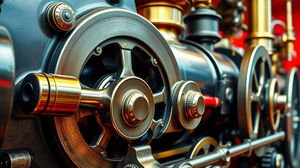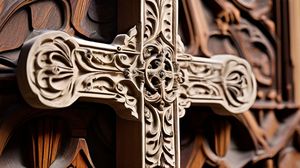
The London Museum of Water & Steam, originally known as the Kew Bridge Steam Museum, is a fascinating destination that showcases the rich history of water supply engineering in London. Housed in a Victorian-era water pumping station, it offers a glimpse into the technological marvels that powered the city's growth during the Industrial Revolution.
One of the highlights of the museum is its collection of working steam engines, some of which are over 100 years old. These engines are some of the largest of their kind ever constructed and provide visitors with a rare opportunity to see them in action, demonstrating the sheer power and innovation of the age.
The museum is home to the Grand Junction 90-inch steam engine, which is one of the star attractions. This colossal engine is the largest working beam engine in the world and is a testament to the engineering prowess of the Victorian era.
In addition to its steam engines, the museum possesses a range of exhibits detailing the history of London's water supply, including how the city's complex system of aqueducts, reservoirs, and pumping stations came to be. This make it a vital educational resource for understanding urban development.
For those intrigued by the quirkier side of history, the museum also delves into unusual methods of water supply used in the past, like the practice of water towers being converted into homes as their original purposes became obsolete.
The museum is supported by a community of dedicated volunteers who help maintain and operate the steam engines, preserving this important heritage for future generations. Their passion and knowledge bring an added depth to the visitor experience.
Another intriguing aspect is the museum's atmospheric setting. The Victorian architecture and sense of history make it a unique venue and have even led to it being used for events and as a filming location for various period dramas.

Making the Most of Your Visit:
If you want to see the engines in action, check the museum's schedule for steam-up days. These are special occasions when they fire up the engines, and you'll definitely want to be there for that because the place really comes alive!
Don't rush through the museum. Take your time to read the informative plaques and engage with the interactive displays. This will give you a much better understanding of the significance of the engines and the history of London's water supply.
Be sure to check out the garden area where you'll find a lovely collection of historic fire-fighting equipment, including a working Victorian fire engine. It's an interesting spot that you might miss if you only focus on the indoor exhibits.
Consider joining one of the guided tours offered by knowledgeable volunteers. Their stories and insights add a whole new dimension to the experience, and it's a great way to learn more detailed aspects of the museum's history.
If you have kids in tow, make sure you spend some time at the Splash Zone and Family Fun Trails. They're cleverly designed to educate and entertain, making it a fun and informative visit for younger visitors.

Visiting Times & Costs:
The London Museum of Water & Steam, originally known as the Kew Bridge Steam Museum, is indeed open to the public. It is a captivating venue for anyone interested in the history of engineering and the development of London's water supply system.
Opening Times:
- Typically open from Wednesday to Sunday.
- It is advised to check their official schedule as hours may vary, especially during holidays and special events.
Admission Fees:
| Category | Price |
|---|---|
| Adult | £17 |
| Concession | £15 |
| Child (Under 18) | £8 |
| Family (2 Adults + 2 Children) | £44 |
Children under the age of 5 can enter for free.
Accessibility:
- The museum is generally accessible for wheelchair users, with lifts available to all floors.
- Accessible toilet facilities are available on-site.
- Assistance dogs are welcome throughout the museum.
- Visitors are encouraged to contact the museum directly for specific accessibility enquiries or to arrange assistance during their visit.

Address & Map:

Nearby:























